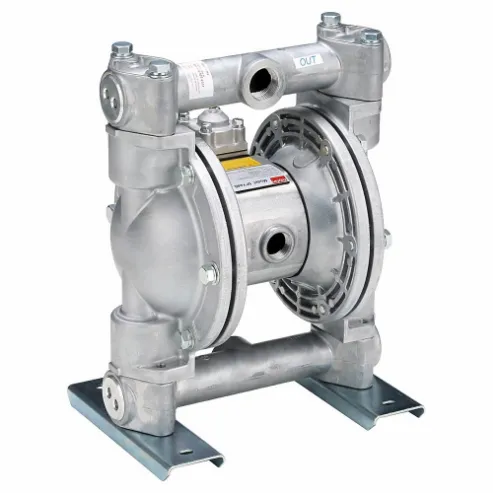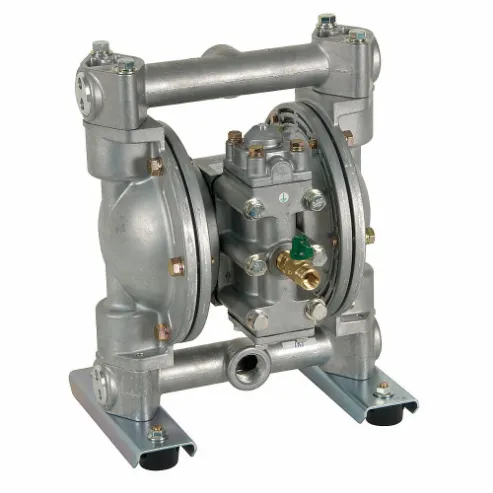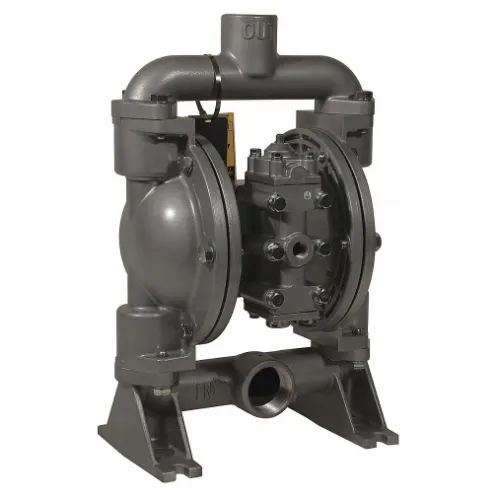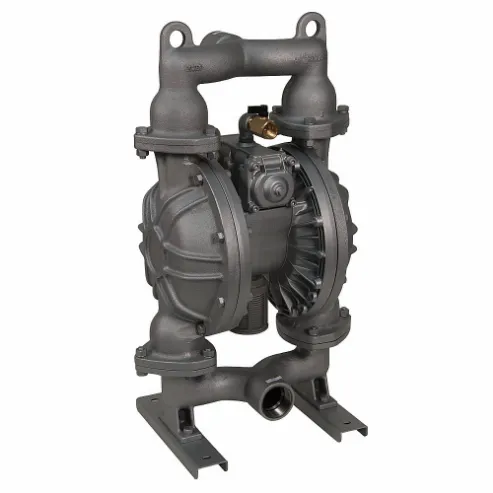Dayton 6PY44 double diaphragm pump is a type of positive displacement pump that utilises two flexible diaphragms to move fluid. It is used in the chemical processing, wastewater treatment, food and beverage and pharmaceuticals industries.
Features:
- Dayton 6PY44 double diaphragm pump features aluminium housing material for durability and resistance to corrosion.
- It has Buna-N diaphragms and valves, ensuring compatibility with a wide range of fluids including corrosive and abrasive substances.
- This Dayton 6PY44 double diaphragm pump offers a single port manifold connection to simplify installation and maintenance.
- It further features a self-priming design for easy startup and operation without external assistance.
- This Dayton double diaphragm pump has a continuous duty cycle, ensuring reliable performance even under prolonged use.
- It offers a maximum discharge pressure of 100 psi, suitable for demanding pumping tasks.
- This Dayton 6PY44 double diaphragm pump comes with a ball valve for precise control over fluid flow.
- It includes a bottom media intake and top media discharge location for facilitating efficient fluid transfer.
- This double diaphragm pump includes a bolt assembly for easy disassembly and maintenance.
Compatible Accessories:
Frequently Asked Questions:
Q. What size are the fluid intake and discharge connections?
A. The fluid intake connection is 1-inch FNPT and the fluid discharge connection is 1-inch NPT for compatibility with standard plumbing fittings.
Q. Does the pump come with mounting hardware?
A. Yes, this Dayton 6PY44 pump comes with stainless steel and steel mounting hardware for stability and reliability during operation.
Q. What safety precautions should I take when using this double diaphragm pump?
A.
- Familiarise yourself with the manufacturer's instructions and recommendations provided in the user manual to ensure proper operation and safety.
- Wear safety glasses, gloves and protective clothing to shield yourself from potential hazards, such as chemical splashes, moving parts and high-pressure air.
- Ensure adequate ventilation in the operating area to prevent the accumulation of fumes or vapours from transferred fluids, minimising inhalation exposure risks.
- Use appropriate mounting hardware to secure the pump in place, preventing accidental movement or tipping during operation and ensuring leak-free connections.
- Install pressure relief valves or devices to prevent overpressurisation, regularly inspecting and maintaining them to ensure proper functioning.
- Know how to swiftly shut down the pump during emergencies or malfunctions and label emergency stop buttons for easy access.
- Stay within the pump's rated pressure and flow limits to prevent damage and potential safety hazards, monitoring operating conditions with gauges and meters.
- Conduct regular checks for worn or damaged parts, loose connections and leaks, replacing worn components promptly to maintain safe operation.
Q. What are the factors to consider while choosing this double diaphragm pump?
A. Major factors include fluid compatibility, flow rate requirements, operating pressure, temperature range, solid handling capability, air supply requirements, mounting and installation suitability, maintenance accessibility, reliability and durability.
 Change Country
Change Country








